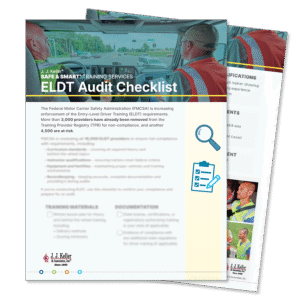June tonnage reported to the American Trucking Associations (ATA) rose by 2.7%, bucking the industry trend as reported by other sources. Much of that increase is due to carriers picking more loads from customers they have contracts with, according to ATA’s Chief Economist Bob Costello.
“Essentially, the market is transitioning back to pre-pandemic shares of contract versus spot market,” Costello said in a July 18 press release. “ATA’s tonnage index is dominated by contract freight, so while the spot market has slowed as freight softens, contract carriers are backfilling those losses with loads from shippers reducing spot market exposure.”
For much of the past year, the industry has seen spot rates rise to record levels. Contracted rates, following the usual cycle, were slow to catch up. With supply chain constraints and manufacturing slowdowns, many carriers kept their trucks moving by finding loads on the spot market.
Now, we’ve entered a later stage of the cycle. Spot rates are trending downward, while carriers who negotiated new contract rates with their customers are seeing those efforts pay off.
The 2.7% increase in June follows a 0.3% May increase. ATA’s June index equaled 120.1, putting the month 20.1% ahead of the 2015 baseline used by ATA.
On a seasonally adjusted basis, the June result was the 10th straight year-over-year gain.
The Cass Freight Index, which measures shipping volumes and expenditures from multiple modes of transportation, declined 2.6% in June from May values. Compared to June 2021, freight volumes fell 2.3%.
The Cass release indicates shipments have been down four of the six months reported this year and notes that inventory has shifted from “a major tailwind” to a more neutral posture but could become a headwind later this year. That’s an indication that retailers and manufacturers that previously couldn’t get enough products have reached inventory levels and slowed ordering for new products. Decreased consumer demand, fueled by inflation, has caused reductions in shipping orders.
The Cass Freight Index measures freight hauled by rail, truck, ship, barge, pipeline and air.
In FTR’s “Mid-Year Lookaround,” released on June 30, Steve Graham, analyst at FTR, said, “We are living in strange times. First, a 100-year pandemic that brought out the best and worst of humanity. Some of the policy responses could be up for debate.”
He cautions that we should not ignore the reality of inflation. He also mentioned recession, saying, “The probability of a recession emerging in the next year is about even, or 50/50.”
Inflationary pressures abound, with higher prices for food and fuel taking a larger chunk of consumers’ paychecks. People have to eat, and they need gas to get to work. They can, however, do without new computers, appliances and other nonessential products. The result is that shipment numbers come down, bringing spot freight rates down too.
According to the latest “Trendlines” report from DAT Services, spot loads posted in June on the country’s largest load board declined by 20.2% from May; in June 2021, the decline was 26%. A decline of more than one-fifth of the number of posted loads in only one month is huge.
Fewer loads means more competition for the loads that remain — and lower rates too. Spot rates for van freight declined 0.9% in June from May rates but are still 0.5% higher than they were in June 2021, just a year ago. Flatbed rates peaked a little later than van and refrigerated rates on the DAT board. For June, they were 0.1% lower than in May but were still 9.5% higher than June 2021. Refrigerated rates declined a full percentage point from May and were 1.6% lower than in June 2021.
Rates are still at a comfortable level compared to 2020, when the market plunged due to COVID before rebounding quickly. There is, however, another issue — fuel.
Nationwide average diesel prices reached a peak of $5.72 per gallon on June 20, according to the U.S. Energy Information Administration (EIA). During that same week, diesel prices averaged $6.92 in California, with multiple retailers charging over $7 per gallon. Diesel prices have been falling since then, but are still over the $5 mark at the time of this writing.
During the same week of 2021, a gallon of diesel sold for $3.29. A year before that it was $2.42. Carriers large and small have issues coping with higher fuel costs.
Combining higher fuel cost with lowered freight rates on the spot market can have devastating results on the smallest carriers.
To help keep inflation in check, the Federal Reserve announced an increase in its most favorable interest rate of 0.75%. The group indicated at the time that a second increase of the same amount was likely to be imposed at the July meeting toward the end of the month. A poor inflation report in July, however, has them talking about the possibility of a full 1% increase.
While such action may slow the economy, the total cost of homes, cars and other items that require financing will rise considerably, as will finance costs for new and used trucks.
Trucking enjoyed a strong market with favorable freight rates for almost two years, but the downcycle has begun. Expect a rough ride for the rest of the year.
Cliff Abbott is an experienced commercial vehicle driver and owner-operator who still holds a CDL in his home state of Alabama. In nearly 40 years in trucking, he’s been an instructor and trainer and has managed safety and recruiting operations for several carriers. Having never lost his love of the road, Cliff has written a book and hundreds of songs and has been writing for The Trucker for more than a decade.














